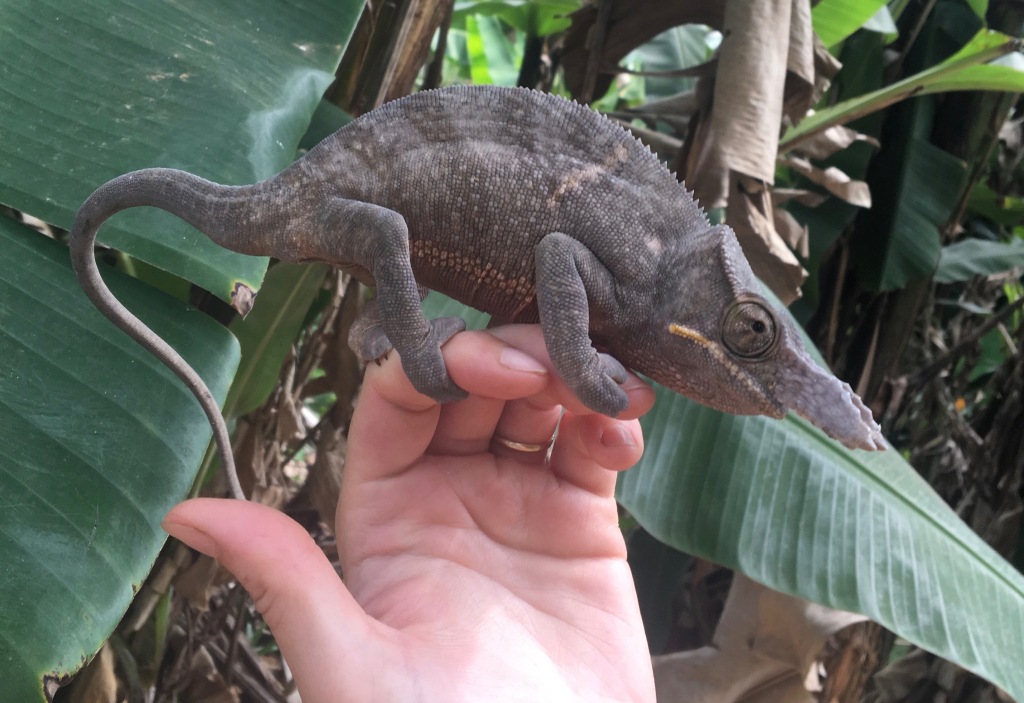Fork-Nosed Chameleon


The largest wild Chameleon I’ve seen this far, I found this male fork-nosed chameleon on the path to my house! He had an impressive nose, and quite a terrifying looking mouth… as I fumbled to get my phone out to photograph him, I let him crawl across my back, and frightened a couple of Malagasy ladies coming down the path… whoops…

Species: Fork-Nosed Chameleon (Furcifer bifidus)
Size: Up to 42cm for males, 30cm for females.
Fun facts: While males of the species sport a fancy two-pronged nose, females are actually the more colorful individuals – a rare case among lizards! Males, like the one pictured here, are often just a dull grey-green color, while females can be bright green with yellow, red, and blue markings.
Range: Throughout eastern rainforests of Madagascar
Diet: Arthropods
Behavior: Though this chameleon is reported to be relatively common, not much information exists about it on the internet…
~~~~~~~~~~~~~~~~~~~~~
Malagasy Giant Chameleon

Madagascar is home to nearly half of the world’s 150 species of Chameleons, including both the largest (as long as your forearm!) and the smallest (which can sit on your fingernail!). Chameleons have always been one of my favorite reptiles, with their projectile tongues, quirky walk, and ability to change colors. In Madagascar, chameleons are called tanelahy, and according to the tradition of some tribes they are actually mischievous spirits…
Species: Malagasy Giant Chameleon (Furcifer oustaleti)
Size: Giant Chameleons, as their name implies, are pretty big – Males can reach 70cm from the tip of the nose to the end of their tails, while females reach about 40cm.

Fun Facts: Chameleons actually have a bone inside their tongues, which allows them to launch them out of their mouths with more accuracy. Some chameleons can capture prey up to about twice the length of their body away from them! (For this species, that can be up to about 50cm.) While it’s certainly true that chameleons have super-tongues, it’s a common misnomer that chameleons change color to match their environment. Chameleons’ color often does help them camouflage, but changes in color seem to be due more to mood and social behaviors than anything else!
Range: Malagasy Giant Chameleons are one of the most common species in the country, and can be found nearly anywhere in Madagascar. They are extremely adaptable, and have even been spotted in the cities of Antananarivo and Antsirabe!
Diet: Like all chameleons, the Malagasy Giant Chameleon eats insects and other invertebrates, capturing them with the aid of it’s extendable tongue!
~~~~~~~~~~~~~~~~~